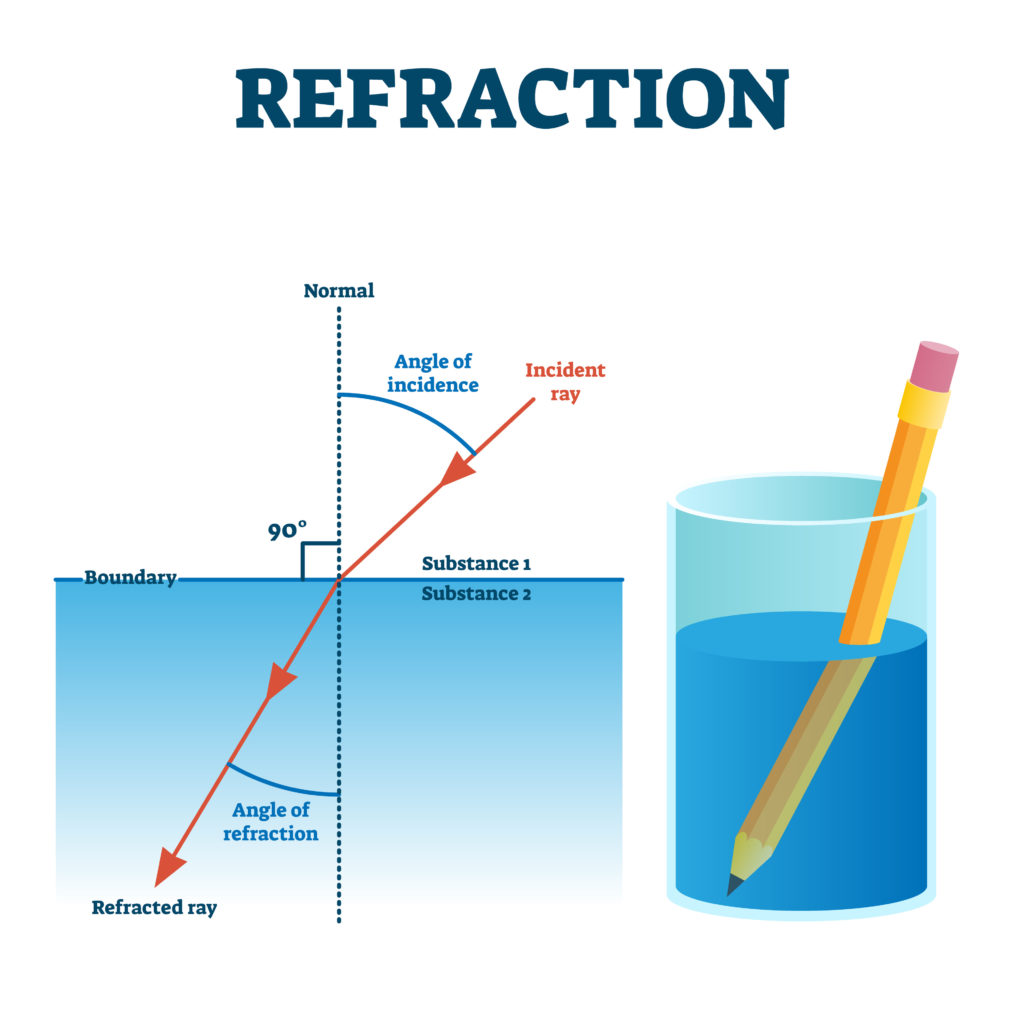Light Refraction and Total Internal Reflection – A Quick Overview of the chapter 11 of Class 8 science book.
Introduction to Light Refraction
Light refraction is the bending of light when it passes from one transparent medium to another. This phenomenon occurs due to the change in the speed of light as it moves from a medium with one optical density to a medium with another optical density. The angle at which the light bends is determined by the difference in optical densities between the two mediums.

Key Points about Light Refraction:
Bending of Light: When light passes from one medium to another at an angle, it changes its direction. This change in direction is called refraction.
Speed and Angle: Light travels at different speeds in different materials. As it enters a material with a different density, it changes its speed and angle of propagation.
Refraction Laws: The behavior of light during refraction is governed by Snell's Law. This law relates the angle of incidence (incoming angle) and the angle of refraction (bent angle) to the refractive indices of the two mediums.Total Internal Reflection:
Total internal reflection occurs when light traveling through a dense medium (like water or glass) strikes the boundary with a less dense medium (like air) at an angle greater than the critical angle. In this scenario, instead of refracting out of the denser medium, the light reflects entirely back into it. This phenomenon is responsible for various optical effects, including mirages and the working of fiber optics.
Key Points about Total Internal Reflection:
Critical Angle: The critical angle is the angle of incidence beyond which total internal reflection occurs. If the angle of incidence is greater than the critical angle, no light will pass through the boundary; it will all be reflected back.
Optical Fiber Communication: Total internal reflection is crucial in optical fiber communication. Light signals bounce off the inner walls of optical fibers due to total internal reflection, allowing data to be transmitted over long distances with minimal signal loss.
Applications: Total internal reflection is used in prisms, binoculars, microscopes, and more. It's also the reason behind the "shining" effect on the surface of water in swimming pools, especially on a sunny day.In conclusion, light refraction is the bending of light when it moves from one medium to another, and total internal reflection occurs when light is reflected back into a denser medium due to hitting the boundary at an angle greater than the critical angle. These phenomena have practical applications in various fields and help us understand how light behaves as it interacts with different materials.

















